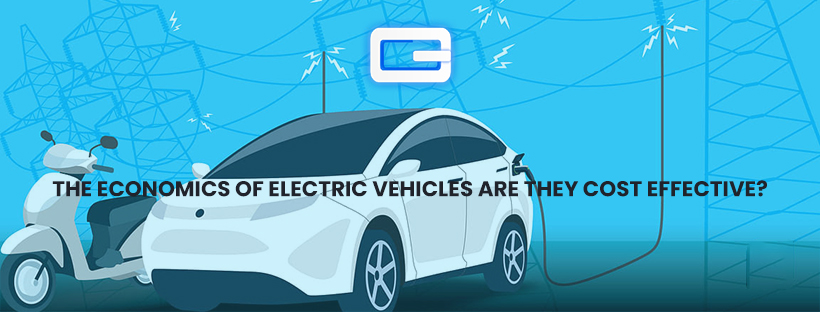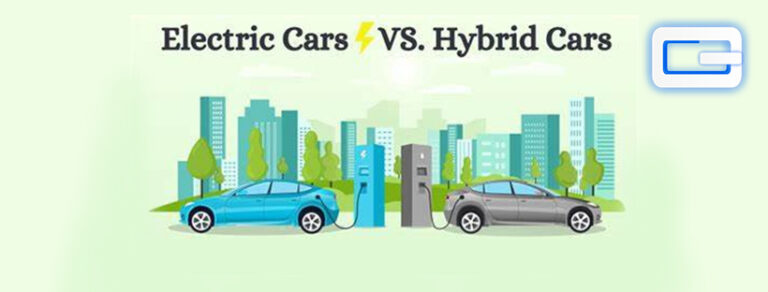The Economics of Electric Vehicles: Are They Cost-Effective?
From the first electric vehicle (EV) in the late 1800s to today’s models, we have seen how these EVs have evolved in terms of design, technology, and most importantly, prices. Also, it is difficult for a common man to dive deep into the economics of EVs and then make a purchasing decision. Hence, this blog post will help people understand the nuances of EVs and their economics.
Before we step into detailed or statistical economic affairs, let’s first understand the private and public economics associated with EVs.
Read the detailed advantages and disadvantages of EVs!
Private Economics of Electric Vehicles
Customer cost savings are one of the primary aspects of the private economics of EVs. It largely revolves around the upfront buying costs and the real-time operational costs. Despite a whopping ~85% reduction in battery costs over decades, the initial buying costs are still high when compared to internal combustion engine (ICE) vehicles. Also, if you’re a first-time EV owner, you have to bear other costs like the home charging installation and the higher electricity bills.
However, do not conclude the cost-effectiveness of EVs just by considering these one-time upfront costs. Also, think about the lower operational and maintenance costs of EVs, as they have fewer moving parts than ICEs. Above all, there might be variations in these private economies concerning location, period of purchase, and the number of EVs you own.
Discover how companies are accountably developing electric mobility programs!
Public Economics of Electric Vehicles
The public economics of EVs comprise external costs, EV policy design, the source of electricity, eVMT, etc.
Research studies claim that EV policies and subsidies can be beneficial only when they induce an “additional” purchase of EVs. And thus becoming an important deciding factor concerning the cost-effectiveness of EVs.
eVMT is simply the electric vehicle’s miles traveled. It is a measure of how concerned a potential EV buyer is when it comes to purchasing decisions. It is directly proportional to the environmental benefits that the EV model provides. At large, this affects the price of EVs and, hence, the economics of EVs.
EV policy design or subsidies would not be sufficient if the environmental benefits were not justified. For example, gasoline-fueled electricity generation can be more cost-effective than coal-fueled electricity generation.
In addition, the charging infrastructure subsidy provided by each country plays a vital role in determining the EV’s public economies.
For example, consider the U.S. state and federal subsidy programs. The subsidy in one state varies from another and greatly affects the consumer’s purchase decision. In this case, the EVs may look cost-effective in one state but not in another. The only fixed aspect here is the federal subsidy (up to ~$7,500 per new EV) as per the American Clean Energy and Security Act of 2009.
The World Bank Data
According to a November 2022 featured article, a 20-country study revealed that the cost-effectiveness or advantages of EVs lie in the considerations. For example, a few countries may consider environmental impact attractive. On the other hand, some countries consider actual cost savings. Certainly, in LMICs (low and middle-income countries), saving is much greater when they have electricity subsidies already in place.
How about the economics of EVs in India in particular?
Thanks to energy.economictimes.indiatimes.com, which broke the myth around the costs and savings of EVs in India around the year 2020.
The average upfront cost of the top 10 ICE vehicles accounts for INR 8 lakh. Whereas the average upfront cost of the top 3 EVs accounted for INR 12 lakh.
The fuel cost of an ICE vehicle accounted for INR 3.6–5.6/km. With EVs, it was only INR 1/km. And the maintenance costs accounted for INR 90,000 for 1.60 lakh km. With EVs, the cost was just one-half or one-third of this.
The top five things EV owners must know about EV maintenance.
Conclusion
One clear thing is that the economics of EVs or their cost-effectiveness are not constant. It varies greatly and depends on your country of residence, the subsidies for EVs in your country, the cost of the EV model you like, how effectively you maintain the vehicle, the cost of maintenance in its entire lifetime, and many more factors associated with your strategic choices in purchasing and maintaining your EV.




